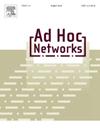Authentication and security challenges for Unmanned Aerial Vehicles: A survey
IF 4.4
3区 计算机科学
Q1 COMPUTER SCIENCE, INFORMATION SYSTEMS
引用次数: 0
Abstract
Unmanned Aerial Vehicles, commonly called drones, have gained significant interest worldwide, as these are mobile autonomous systems, and they have found applications in nearly every field. The rapid growth rate of drone use has exposed tremendous security concerns related to communication platforms, and authentication has become essential to ensure that data interchange between drones is safe. Traditional drones rely on established communication protocols, making them vulnerable to new threats emerging with the advent of a quantum-based world. The current literature still needs comprehensive authentication mechanisms for classical and quantum drones. This survey comprehensively reviews the critical differences in communication security between classical and quantum drones. The work addresses both paradigms’ needs, challenges, and constraints, making the requirement for strong authentication mechanisms essential. In addition, a comprehensive review of typical security threats, attacks, and relevant countermeasures is also provided on classical and quantum drones. Performance analysis computation and communication overhead comparisons are also performed to determine and compare authentication techniques. This work is essential for researchers and practitioners trying to develop security in the emerging landscape of drone technology because it bridges the gap that separates the classical from the quantum communication security of drones.
无人驾驶飞行器(俗称无人机)是一种可移动的自主系统,几乎在每个领域都有应用,因此在全球范围内备受关注。无人机使用量的快速增长暴露了与通信平台相关的巨大安全问题,而身份验证对于确保无人机之间的数据交换安全至关重要。传统的无人机依赖于既有的通信协议,因此很容易受到随着量子世界的到来而出现的新威胁的影响。目前的文献仍然需要针对经典和量子无人机的全面认证机制。本调查报告全面回顾了经典无人机和量子无人机在通信安全方面的关键差异。这项工作涉及这两种范例的需求、挑战和制约因素,因此对强大认证机制的要求至关重要。此外,还全面回顾了经典和量子无人机的典型安全威胁、攻击和相关对策。还对计算和通信开销进行了性能分析比较,以确定和比较认证技术。这项工作对于试图在新兴无人机技术领域开发安全性的研究人员和从业人员来说至关重要,因为它弥补了无人机经典与量子通信安全之间的差距。
本文章由计算机程序翻译,如有差异,请以英文原文为准。
求助全文
约1分钟内获得全文
求助全文
来源期刊

Ad Hoc Networks
工程技术-电信学
CiteScore
10.20
自引率
4.20%
发文量
131
审稿时长
4.8 months
期刊介绍:
The Ad Hoc Networks is an international and archival journal providing a publication vehicle for complete coverage of all topics of interest to those involved in ad hoc and sensor networking areas. The Ad Hoc Networks considers original, high quality and unpublished contributions addressing all aspects of ad hoc and sensor networks. Specific areas of interest include, but are not limited to:
Mobile and Wireless Ad Hoc Networks
Sensor Networks
Wireless Local and Personal Area Networks
Home Networks
Ad Hoc Networks of Autonomous Intelligent Systems
Novel Architectures for Ad Hoc and Sensor Networks
Self-organizing Network Architectures and Protocols
Transport Layer Protocols
Routing protocols (unicast, multicast, geocast, etc.)
Media Access Control Techniques
Error Control Schemes
Power-Aware, Low-Power and Energy-Efficient Designs
Synchronization and Scheduling Issues
Mobility Management
Mobility-Tolerant Communication Protocols
Location Tracking and Location-based Services
Resource and Information Management
Security and Fault-Tolerance Issues
Hardware and Software Platforms, Systems, and Testbeds
Experimental and Prototype Results
Quality-of-Service Issues
Cross-Layer Interactions
Scalability Issues
Performance Analysis and Simulation of Protocols.
 求助内容:
求助内容: 应助结果提醒方式:
应助结果提醒方式:


